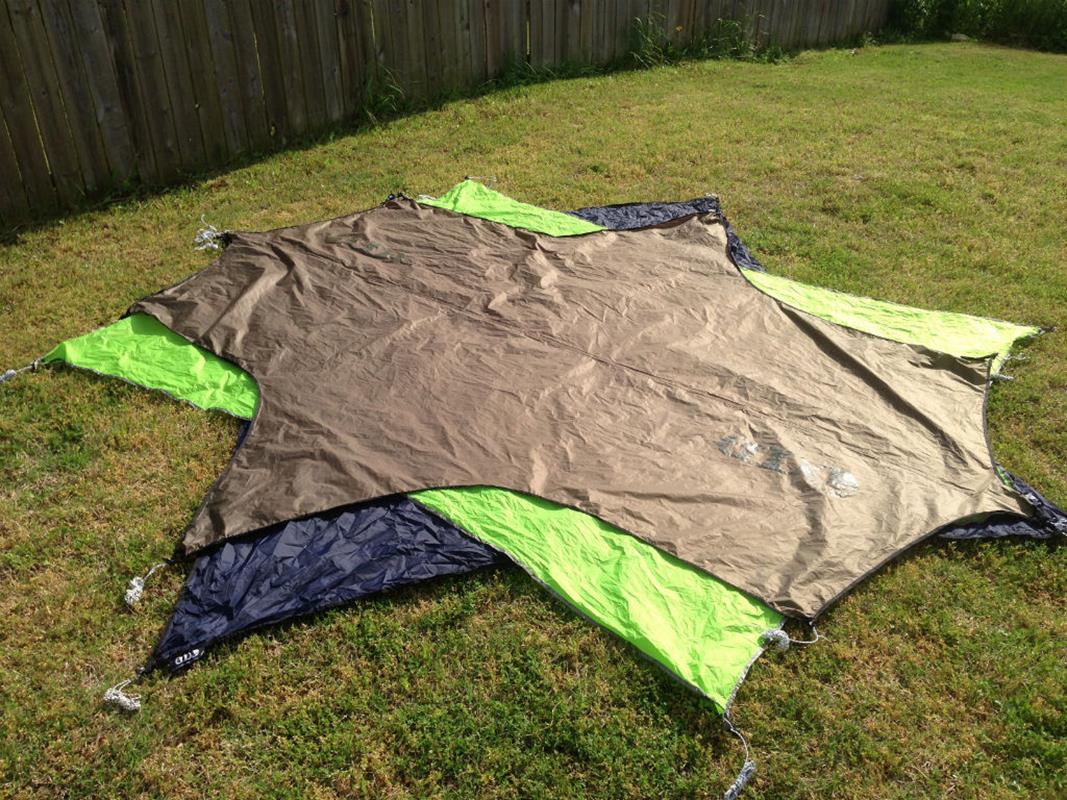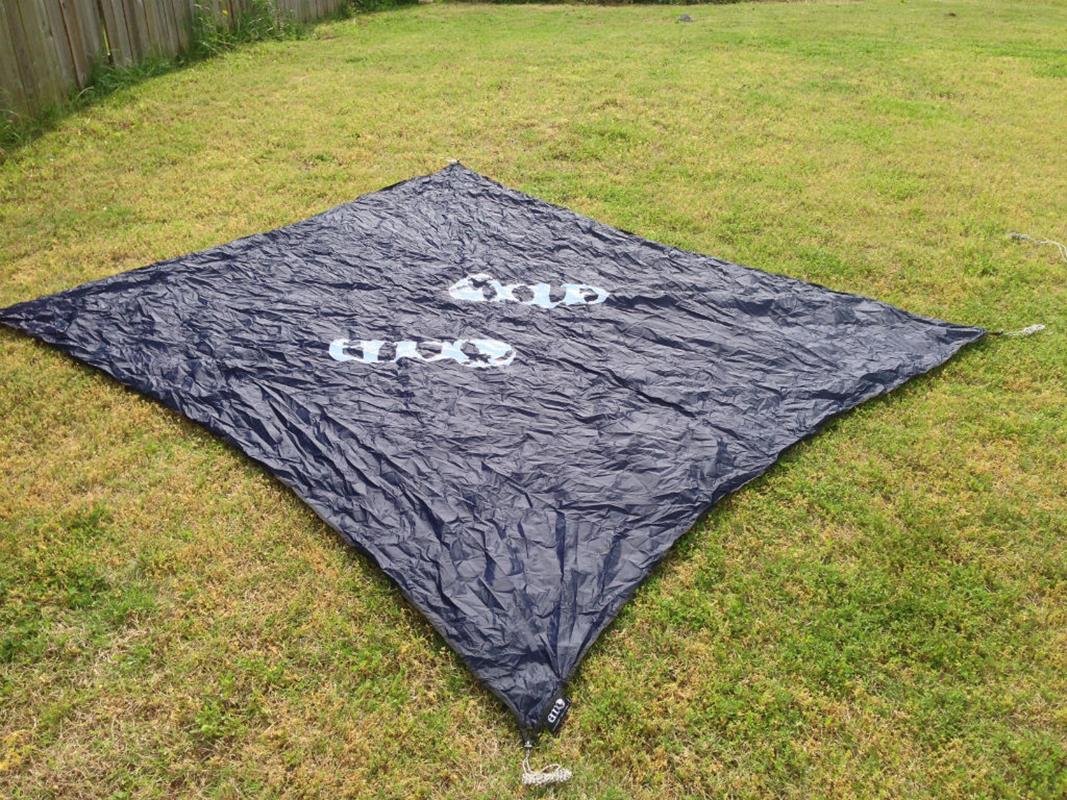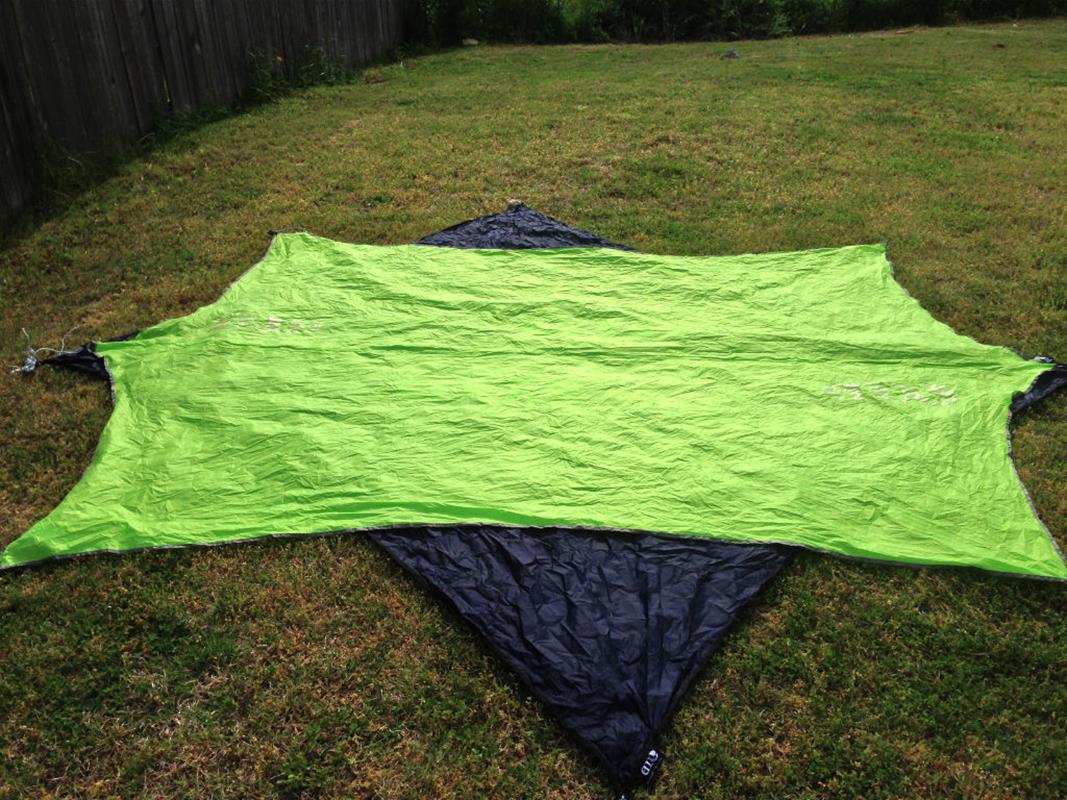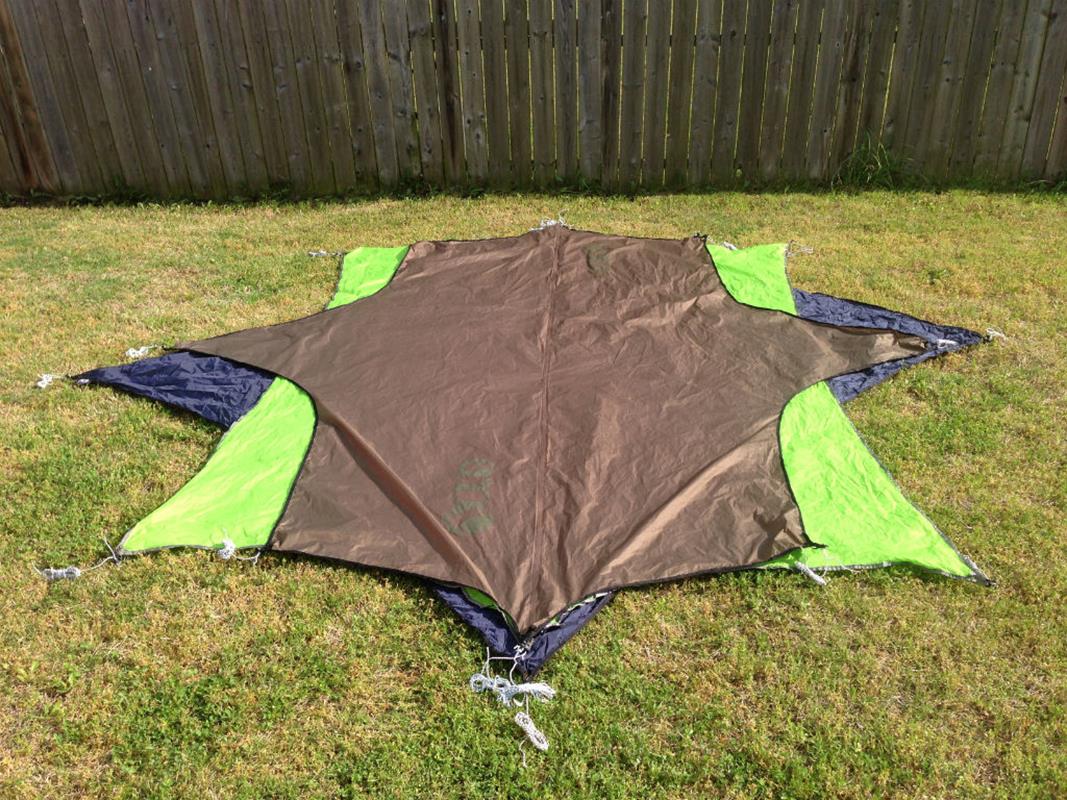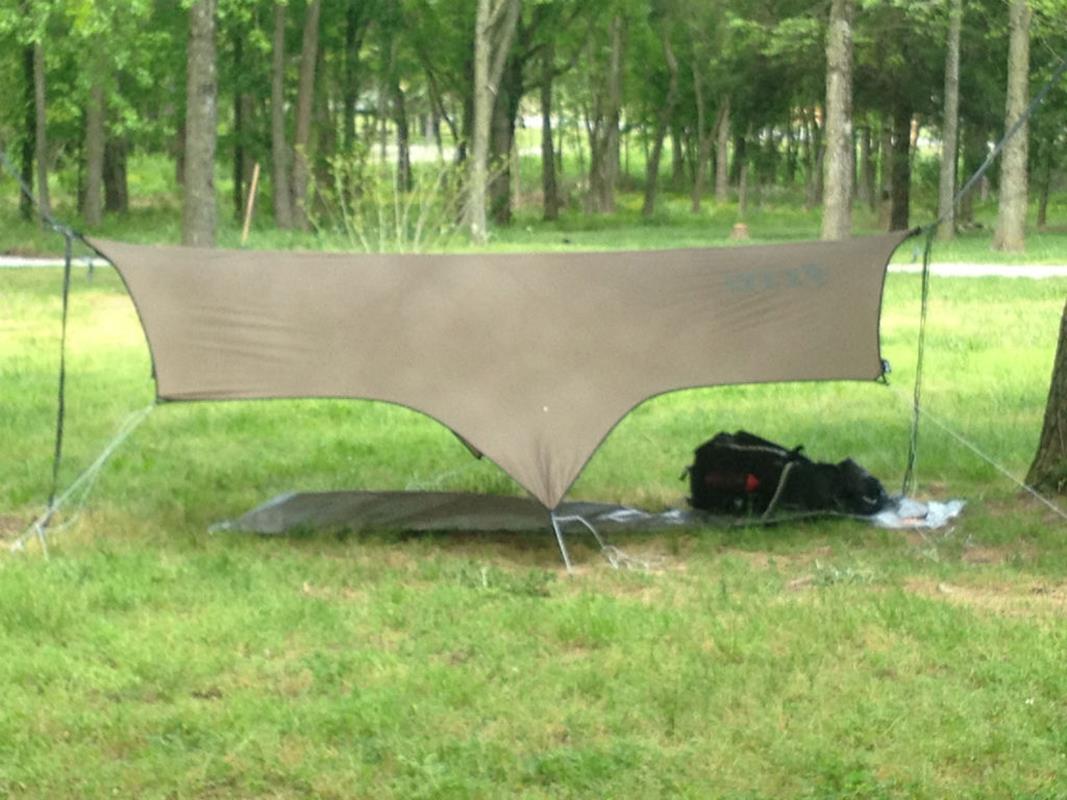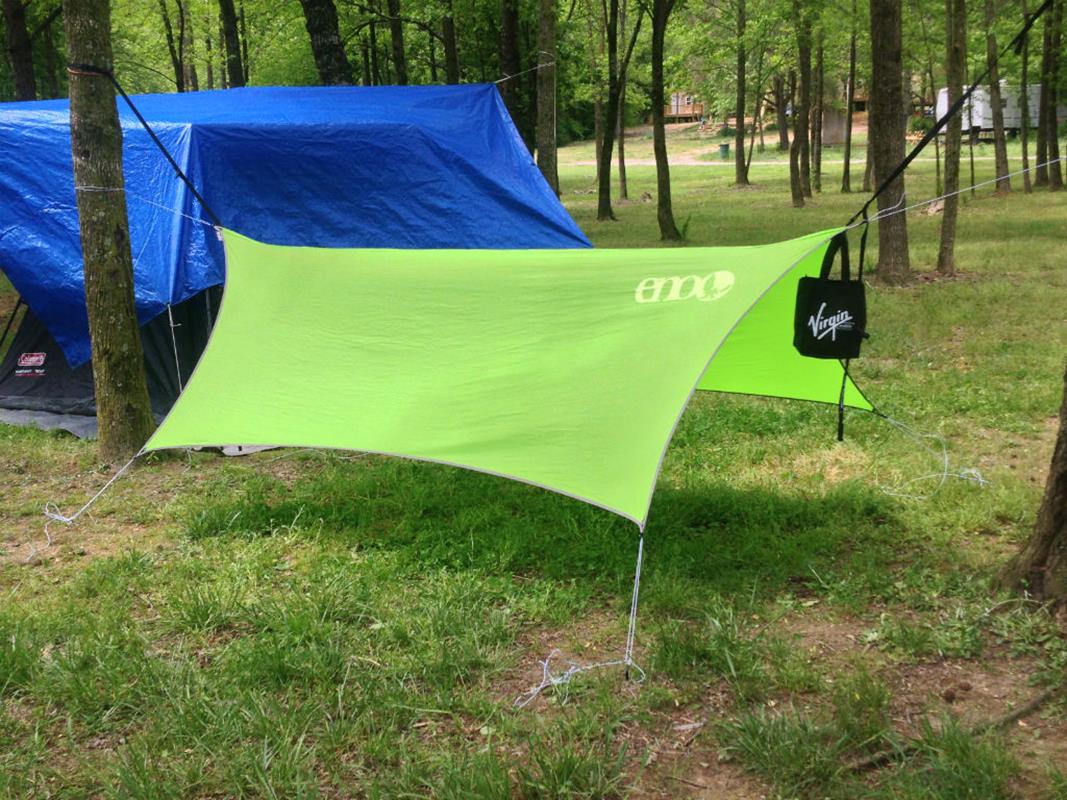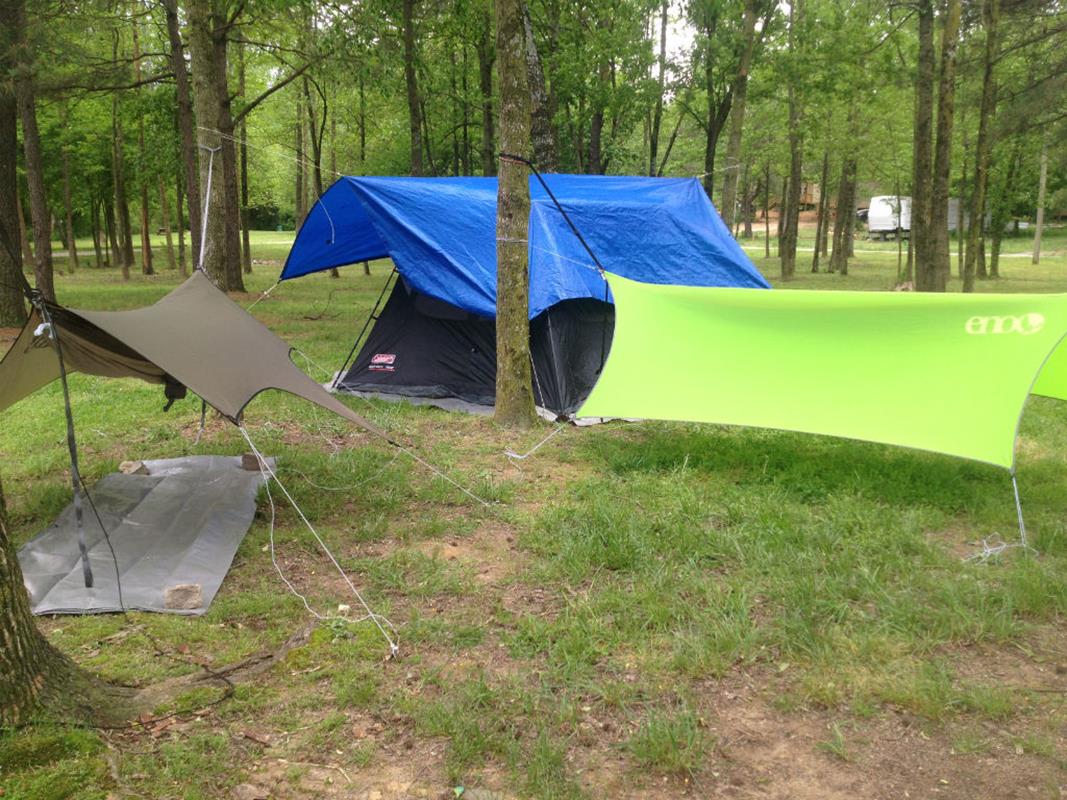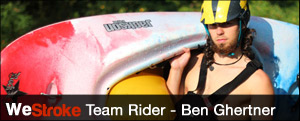Eno Fast, Pro, and Dry Flys Comparison and Review
- Friday May 10, 2013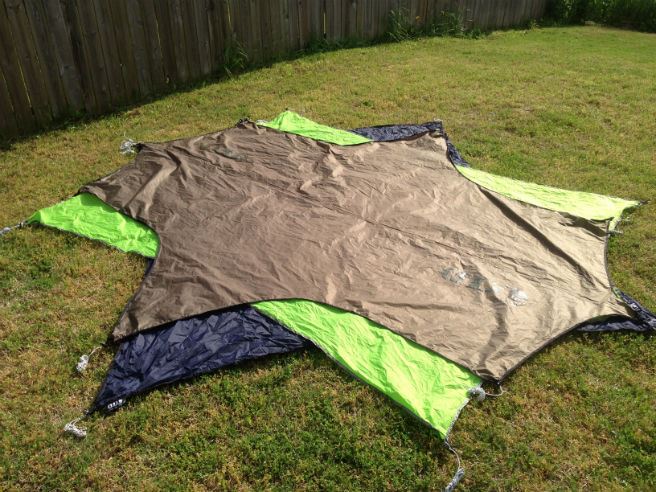
If you haven't noticed yet, here at WeStroke we are big fans of Hammock Camping. Check out our ENO DoubleNest Deluxe and ENO DoubleNest reviews. So after waking up to rain a few times in our hammocks we realized that we needed a Fly. When we first started out we did pretty good with the classic blue tarp. That along with some paracord, stakes, and the knowledge of a few good knots ("Trucker knot" and the "Taut-line Hitch"). This set up cost about 15 bucks, and keeps you pretty dry. However, the classic blue tarp doesn't pack up that well, and my goal was to have a bag that would be ready in a moments notice should we find something running.
So we took it on our self to try out all the ENO tarps and see how they compared. I know there are other tent tarps out there, but since we already had a few ENO hammocks, we figured we would start with them. ENO has 3 primary hammock tarp designs. Those being the Fast Fly, Pro Fly and the Dry Fly. These three fly's are made out of rip-stop nylon and weight in at about 22 ounces.
The Fast Fly is a diamond shaped fly that has 4 attachement points. Once you get this up and stick in 2 stakes, you're done. This fly is great for those trips where you know wind and rain are not going to be a issue. This is my go-to tarp unless I know a storm is coming through. I have used this tarp in the rain and had no problems staying dry. This was a moderately light rain with no wind, so I didn't have to worry about having rain blow at me from the sides too much.
The Pro Fly is a rectangular shaped fly that has 6 attachement points. This fly has the largest coverage area and is probably the best one to choose if you're going to pick one for the most bang for the buck. Once staked down with 4 stakes, this fly will provide you with great rain protection, a good amount of gear storage area, and protection against moderate winds.
The Dry Fly is a cat cut of the Pro Fly, that allows for 8 attachement points. This Fly is going to keep you driest in the roughest of conditions. With all or your guylines staked in well, and your hammock set up properly, you could withstand a heavy rain with heavy winds, no problem.
I am sure if your reading this, that you have a good idea of these three already, and are more interested in real world testing. Here at WeStroke, when we test, we make it good. We packed up our gear and headed to our usual spot at Adventures Unlimited by the Ocoee river to set up camp. What better time to do this than when the forecast is calling for 4 to 6 inches of rain right?
Set up of the tarps is pretty easy. You can use the cord that comes with the fly to tie it to the trees, however I choose to use some paracord as a continuous ridge line. This gives you a more stable ridge, and lets you "V" around your hammock straps. Other than the continuous ridge line, everything else I tested was the stock line that comes with the flys. The stakes used for the testing were the Easton 6 inch stakes.
The first night the rain came in, and boy did it come. Gusts of up to 40mph and at least 2 inches of rain dropped. The dry fly kept me dry, and because I had placed my hammock fairly close to the fly, I didn't feel a great deal of wind. Short of being woken up a few times by thunder, I slept like a baby.
In the gallery below the navy blue fly is the Fast Fly, the lime colored fly is the Pro Fly, and the brown fly is the Dry Fly.
The Pro Fly didn't fair as well in the heavy winds. When I woke up the next day I noticed that the Pro Fly had some stakes pulled out of the ground from the wind gust. Of course we were camping in a bit more extreme conditions than most would consider. Longer stakes would probably help with that as well.
The 2nd night we had a heavier rain fall than the first night. Probably about a two and a half inches of rain. The winds were not as high as the first night, probably a few gust of around 20mph. On a night like this, the Pro Fly performed great. Myself and all my gear beneath it were nice and dry.
As I mentioned before, I have used the Fast Fly in a light to moderate rain. It had no problem keeping me dry, however I knew that we were expecting gusts of wind on this trip and I know the Fast Fly isn't made for as harsh of conditions as the other two. It is made for speed and convenience. If I am not expecting heavy winds, or heavy rain, the fast fly would be my go to.
It is worth mentioning that even though both fly's did great in the conditions I put them in, both tarps water repellant started to come off by the end of the trip. This isn't really a big deal, but it might concern some people. Just spray it down with some ReviveX and your good as new.
To wrap it up, If I could only pick one I would go with the Pro Fly because of its overall coverage. It covers the most ground and does well in moderate weather. Even with this said, my favorite is the Fast Fly. I like fast set ups, and even though it's only 2 less stakes, for me that's 2 less stakes I have to deal with. Lastly, if I am expecting some harsh weather, my go to would be the Dry Fly. Eno has a good comparison guide on there site. Check it out here.
FAST FLY:
Pros:
- Quick set up
Cons:
- Is not made for harsh weather
PRO FLY:
Pros:
- Great Coverage
- Good protection against moderate weather
Cons:
- Even though it does well in heavy rain, strong winds could be a problem
DRY FLY:
Pros:
- Good protection agains harsh weather
- Fair amount of ground coverage
Cons:
- Longer set up time




